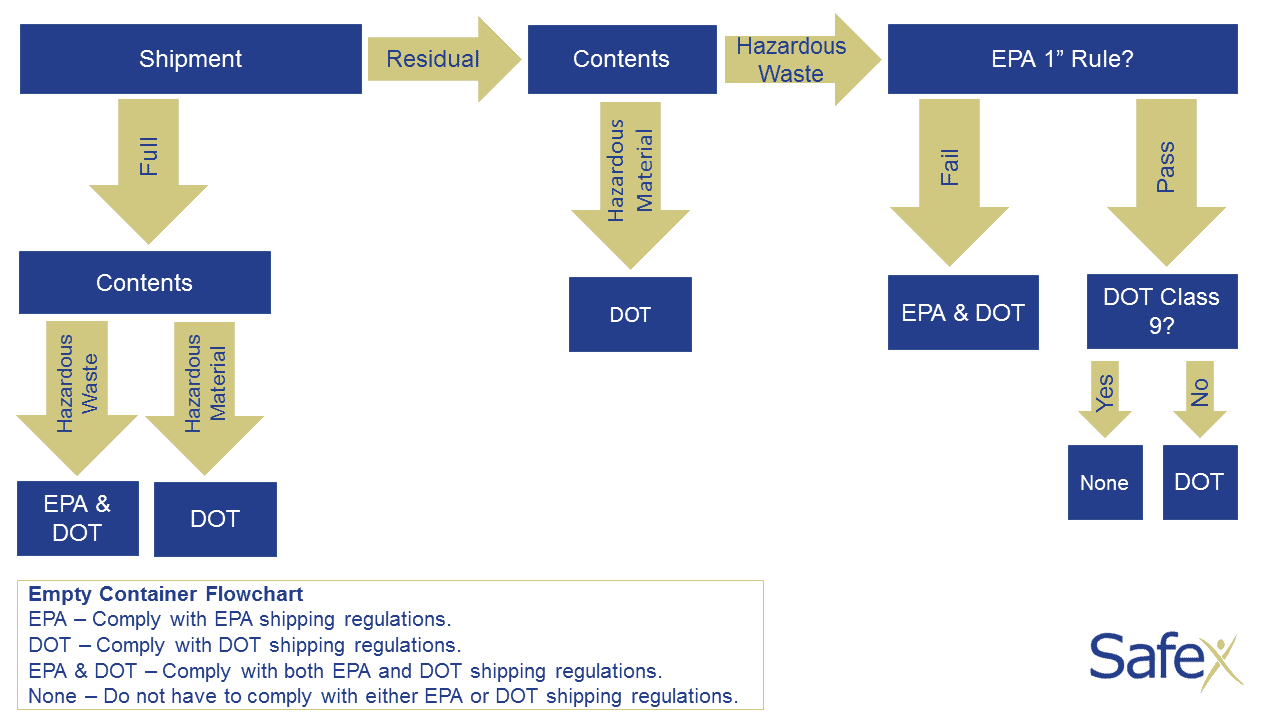It doesn’t matter if you’re a glass (ahem) container half empty or half full person. This article about “empty” containers will help everyone better understand EPA and DOT hazardous materials/waste shipping regulations.
Shipping and disposing of hazardous materials and/or hazardous waste can be confusing because you have to comply with regulations from two different agencies—the Environmental Protection Agency (EPA) and the Department of Transportation (DOT). On top of that, shipping containers that once held hazardous materials and/or hazardous waste have different definitions of “empty” according to the EPA and DOT.

- DOT hazards are not defined by the quantity of material in the container but the properties of the material. For instance, even when the container is visually empty, the container may still pose a hazard under DOT and therefore is not considered “DOT empty.”
- The EPA’s definition of “RCRA empty” says in order for most containers to be considered empty, there must be no more than one inch of material remaining in the container or no more than 3% of the container’s total capacity (if the container holds less than or equal to 119 gallons) or 0.3% of the container’s total capacity (if the container holds more than 119 gallons).
Therefore, it is possible to have a container that the EPA considers empty, but DOT does not. However, if the material inside the container is classified as a DOT Class 9 material and is “RCRA empty” then the container is exempt from EPA and DOT hazardous material and hazardous waste shipping requirements.
We’re all for simplification. That’s why we created this diagram to help you decide which regulations you need to follow when shipping and deposing containers. U.S. DOT maintains a definition of hazmat and procedures for empty containers in 49 CFR 173.29. U.S. EPA maintains a definition and procedures for empty containers in 40 CFR 261.7.
(click image to enlarge)
If you have questions about EPA and DOT hazardous materials/waste shipping regulations, please get in touch.
We’re happy to be a resource to you.

